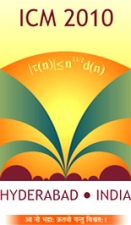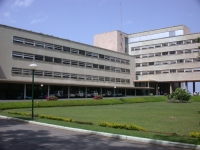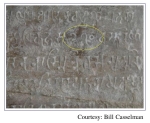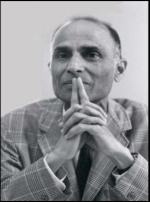India and the World of Mathematics
India has a long tradition of pursuit of mathematics. Geometry had an important (practical)role to play in Vedic culture (circa 1000 BCE) and Pythagoras’s theorem was known to mathematicians in India by the eighth century before Christ. Astronomy went hand in hand with mathematics and not surprisingly trigonometry was an area where India made considerable progress. The place value system with the use of the zero seems to have been invented here in the early centuries of the Christian era. Scholars from the middle east who came into contact with India absorbed the “Hindu methods” of calculation with great enthusiasm and were to pass it on to Europe later. Al Biruni a 10th century scholar is full of high praise for “Hindu mathematics” even while he is highly critical of several other aspects of the culture of the subcontinent. In Kerala in the southwest of India, a mathematics school flourished for some 200 hundred years starting in the 14the century and the leading mathematician of the School, Madhava, seems to have anticipated some of the essential ideas of Calculus. It is not clear if these discoveries had any influence on later developments in Europe.
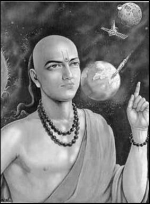
Aryabhata was the first in the line of great mathematician-astronomers from the classical age of Indian mathematics and Indian astronomy.India has a long tradition of pursuit of mathematics. Geometry had an important (practical)role to play in Vedic culture (circa 1000 BCE) and Pythagoras's theorem was known to mathematicians in India by the eighth century before Christ. Astronomy went hand in hand with mathematics and not surprisingly trigonometry was an area where India made considerable progress. The place value system with the use of the zero seems to have been invented here in the early centuries of the Christian era. Scholars from the middle east who came into contact with India absorbed the "Hindu methods" of calculation with great enthusiasm and were to pass it on to Europe later. Al Biruni a 10th century scholar is full of high praise for "Hindu mathematics" even while he is highly critical of several other aspects of the culture of the subcontinent. In Kerala in the southwest of India, a mathematics school flourished for some 200 hundred years starting in the 14the century and the leading mathematician of the School, Madhava, seems to have anticipated some of the essential ideas of Calculus. It is not clear if these discoveries had any influence on later developments in Europe.
The colonial period
After a dormant period of some two or three centuries, in the mid 19th century when the British colonial administration set up universities along European lines, there was a a resumption of interest in mathematics in India – and it was now mathematics as pursued in the West. Many British academics were involved in the promotion of mathematical activity in this country in those early days and not surprisingly, the mathematical areas pursued in Britain were the ones Indians took to. In early twentieth century however Indian mathematicians were also becoming aware of developoments in mathematics elsewhere in Europe. Also Indian mathematicians were enrolling themselves in European (mostly British) universities and were geeting trained there.
In April 1907, a civil servant, V Ramaswamy Iyer who was also a mathematics enthusiast initiated the formation of the first mathematical (infact the first scientific) society in the Indian subcontinent. The society called then The Indian Mathematics Club had at its inception only 20 members located in different cities (mainly Chennai, Mumbai and Pune); many among them, personal friends of Ramaswamy Iyer, were not professionally involved with mathematics. The society started subscribing to some Mathematics journals and these volumes were circulated among the membership. In 1909 the society’s name was changed to Indian Mathematical Society (IMS). It still functions today under that name and from that year has been publishing a journal, the “Journal of the Indian Mathematical Society”. The first issue of the journal (published in 1910) has an article by one Seshu Iyer on Green’s Functions where he talks about Poincare’s work on the subject; he says among other things that while the British treatment of the subject was largely from the point of view of physics the French, mainly Poincare, developed it from a purely mathematical standpoint. This is an indication that Indian mathematicians were exploring mathematics beyond what the British had brought to them.
I know of two great papers published in the Journal of the Indian Mathematical Society. The first is by Selberg on (what we now know as) the Selberg Trace formula. The second is Weil’s paper on the classification of classical semisimple groups over an arbitrary field of characteristic 0. There must be others.
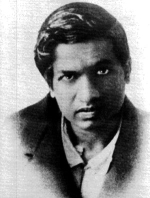
Srīnivāsa Aiyangār Rāmānujan made substantial contributions to mathematical analysis, number theory, infinite series and continued fractions.
The first major mathematician from India to have had an international impact in the modern period was of course Srinivasa Ramanujan. And the decisive factor that was responsible for the flowering of that natural genius was the intervention of the towering Cambridge figure G H Hardy. The fascinating story of Ramanujan is told admirably in Robert Kanigel’s biography titled “The man who knew infinity”. There are some very interesting essays about Ramanujan in a volume entitled “Ramanujan: Essays and Surveys” (an AMS publication, edited by Bruce Berndt and Robert A Rankin), among them the text of a talk given by Selberg about the influence Ramanujan’s work had on him at a Ramanujan Centenary Celebration in Mumbai (Bombay).
Hardy never visited India but his mathematical influence in this country was pervasive. There were other great mathematicians who had also some influence, but Hardy’s was preeminent in the first quarter and more of the 20th century. There were of course, as already mentioned, many visitors mainly from Britain who spent considerable time in Indian universities. In the thirties and thereafter one finds quite a few truly eminent names among the mathematicians visiting India for fairly long periods. Some Jewish mathematicians sought refuge in India to escape the Nazi onslaught in Europe.
Ramanuajan became an iconic figure and inspired many young men to take to research in mathematics. Research of good quality started emerging out of Universities of Calcutta and Madras and a little later some others, notably Allahabad and Benares emerged as good centres of mathematical research. Here are some names that were recognised internationally in their time the first half of the twentieth century): S Mukhopadhyay (known for his “four vertex” theorem), Ganesh Prasad, Ananda Rau, B N Prasad, Vaidyanathaswamy, P C Vaidya, S S Pillai, P L Bhatnagar, T Vijayaraghavan, S Minakshisundaram, S Chowla, K Chandrasekharan, D.D. Kosambi (see this article for more details).
Andre Weil spent 2 years (1930 – 32) at Aligarh Muslim University (Aligarh is a mid-sized town some 100 kms south of Delhi) as Professor and Chair of the mathematics department. He was of course (at 24) yet to achieve the kind of fame and standing that he did a little later in his career. In his autobiography (Apprenticeship of a mathematician) he speaks fondly of his days there and of the many Indian friends he made during that sojourn. The English text of a talk about Indian mathematics of the thirties given in Moscow (in 1936) can be found in his collected works (springer Verlag 1980). The talk ends with “Nevertheless the intellectual potentialities of the Indian nation are unlimited, and not many years would perhaps be needed before India can take a worthy place in world mathematics” Weil was again in India some 35 years after that to take part in international conference in Algebraic Geometry in Mumbai (then Bombay). He went around the country renewing his old acquaintances.
Another frenchman who had a tremendous influence on mathematics in India was Rev Fr Racine. He came to India sent here by the Jesuit mission in 1934 to teach mathematics in St Joseph’s College in Thiruchi, a town in in the state of Tamilnadu. He was a student of E Cartan (and a friend of H Cartan). With that background he was able to influence students to pursue mathematical areas which occupied centre-stage in Europe rather than the traditional largely Cambridge inspired subjects. Many of his students were to become distinguished mathematicians. Fr Racine stayed on in India till his death in 1976 paying only infrequent short visits to France. Another big name who visited India several times during the late forties and later was M H Stone. On these visits he invariably spent substantial amounts of time in Chennai (then Madras). He spotted quite a few talented young men and helped arrange for them to visit great institutions like the Institute in Princeton. Stone appears to have enjoyed these visits immensely and he had many friends in India.
Apart from the universities one other institution was promoting mathematical research vigorously – the Indian Statistical Institute. Many distinguished statisticians emerged from this institution in the first half of the twentieth century: P. C. Mahalonobis, R. C. Bose, S. N. Roy, K. R. Nair, D. B. Lahiri, C. R. Rao to name some.
The post independence (1947) scene (mainly about TIFR)
Two institutions, The Tata Institute of Fundamental Research (TIFR) in Mumbai (Bombay) and the Indian Statistical Institute (ISI) in Kolkata (Calcutta) have played a leading role in the promotion of mathematics in the country in the post-independence period. They both embarked on running graduate schools along the lines of American Universities and combining careful recruitment of young talent with rigorous training contributed immensely to the promotion of mathematics. They had by the sixties established themselves as centres of excellence. Later in this page you will be able to read about ISI and some other institutions as well.
TIFR made an unsuccessful effort to get Chern on its permanent faculty when he left China in 1949 – 50: Chern opted to go to Chicago from where too he had an offer. In the fifties, a bid was made also to get Pjatetskii Shapiro but the necessary permission from the Soviet Union was not forthcoming.
One of 20th century’s greatest mathematicians, Carl Luidwig Siegel made four 3-month long visits to TIFR during the fifties and sixties. On each of these occasions he gave a course of lectures on advanced topics and notes of these lectures were published by TIFR and are in demand to this day. During his stays in Mumbai, he invariably holidayed for a few days in Mahabaleshwar, a hill station near Mumbai.
Laurent Schwarz too undertook several visits to TIFR and his lecture notes were again a wonderful resource for graduate students. One year Schwarz deliberately planned his visit to Mumbai during the monsoon months (June – August), but sadly the rains failed that year. The monsoon when in full swing is indeed a glorious experience on the West coast of India even if it does disrupt normal life now and then. Schwarz however had better luck with his hobby of collecting butterflies.
Over the last 5 decades TIFR has had a stream of many famous visitors Early (fifties and sixties of the last century) visitors include J-P Kahane, B Malgrange, F Bruhat, J-L Koszul, J-L Lions, all French, Germans like Mass, Rademacher, Deuring and other Europeans, de Rham and Borel for example from Switzerland and Andreotti and Vesentini from Italy. All of them spent upward of two months in Mumbai and gave lectures and the notes of these lectures again have enjoyed a great reputation. Long term visits of this kind by eminent mathematicians continues to this day, but there were also visitors at junior levels in large numbers at TIFR. TIFR has of course played host to many more eminent names but for shorter durations like a week to one month: Atiyah, Deligne, Grauert, Gromov, Grothendieck, Hormander, Vaughn Jones, Ianaga, Ihara, Manin, Milnor, Mumford, Selberg, Serre, Smale, Stallings, Thom ……
There have been of course a large number of eminent visitors from America as well, some of whom (Bott, Browder, Stallings) spent extended periods of time in the country. Two names stand out when it comes to the amount of time they have spent in this country: Armand Borel (he could also be classified as Swiss) and David Mumford. Borel’s first visit was in 1961 and the visit fascinated him greatly. He became a periodic visitor, Indian classical music being a big draw for him. He liked to be in Chennai during the “Music Season” – December – January. He was always accompanied by his wife Gaby. Mumford spent a whole academic year (with his family) in TIFR in 1967 – 68 and has been there for some more extended visits
TIFR has also been regularly organising international meetings in diverse topics. The meetings started in 1956 have been happening every four years. The topics are chosen to meet two criteria: they should be considered important by the mathematical community at large; secondly loal mathematicians should have contributed to them significantly. Many of the visitors mentioned above were participants in these meetings styled “International Colloquia”.
In the more recent past Robert Langlands spent an extended period of time in India. He was at TIFR much of this time but visited also Chennai, Bangalore, Delhi and Allahabad. Allahabad is where Harish-Chandra received his undergraduate education. There is now a research institute named after Harish-Chandra which too has hosted many eminent visitors from the west. Bill Casselman’s interest in the history of mathematics has triggered some of his recent visits here (he had visited Mumbai for the first time some 30 years ago to participate in an international conference). His photograph of a ninth century inscription with the number 270 can be seen here. This is the oldest extant inscription where ‘0′ finds a place.
So India has been a happy (professional) destination for quite a few mathematicians over the last hundred years and more. As I said earlier, I have spoken mostly about visitors to one institution. My list is by no means exhaustive – I have left out the names of many of the visitors who went to Mumbai in the late seventies and later.
Institutions in the country other than TIFR and ISI too have played host to many mathematicians from abroad even if they may not have done it on the scale of TIFR or ISI.
The Indian mathematical community looks forward to welcoming their colleagues from abroad in large numbers at the Congress. We do hope that many would spend some time beyond attending the Congress and will come back for longer visits later too.
M S Raghunathan
